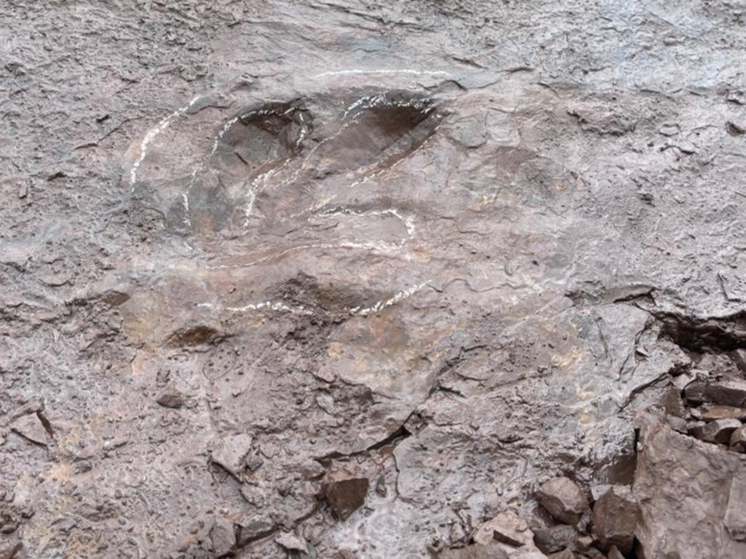Prehistoric animal prints are just a few centimeters in diameter
Ancient footprints of tiny dinosaurs have been discovered in China's Linxia UNESCO Geopark. According to the South China Morning Post, scientists were informed by museum staff in the region, who noticed the tiny footprints after heavy rains.
 Photo: China University of Geosciences
Photo: China University of Geosciences
Tiny fossilized footprints of dinosaurs smaller than a chicken have been discovered for the first time in northwest China. The discovery could shed light on the evolution of birds.
The rains revealed five prints that are just a few centimeters across, demonstrating how small the dinosaurs that left them were. It is believed that the prints may belong to a Minisauripus, which was slightly smaller than a chicken. At the same time, scientists do not rule out the fact that the track could have belonged to a baby lizard.
«We estimate that the body length of this dinosaur is about 25 centimeters, but the tail should be at least half the length,» says paleontologist Lida Sin.
To clarify, sparrows are typically about 17 centimeters long, pigeons are about 35 centimeters long from head to tail, and chickens are typically between 40 and 60 centimeters long.
The paleontologist says studying the tracks could also help scientists shed light on dinosaur behavior, including how they interacted with their environment and with each other.
If the fossilized tracks belong to Minisauripus, then this species of prehistoric animal may have lived alongside waterfowl, as evidenced by other prints and tracks that indicate there was water nearby. The tracks have been dated to the Early Cretaceous period, which lasted from 145.5 to 100.5 million years ago, and were first discovered in the Sichuan River basin in southwest China, as well as in eastern Shandong Province and South Korea.
There is some debate about whether the fossil evidence paleontologists have is true of these dinosaurs, but in 2016, Xing said that some Minisauripus tracks in Sichuan were «the smallest known non-avialan theropods that preserve ichnogenetic tracks.»


